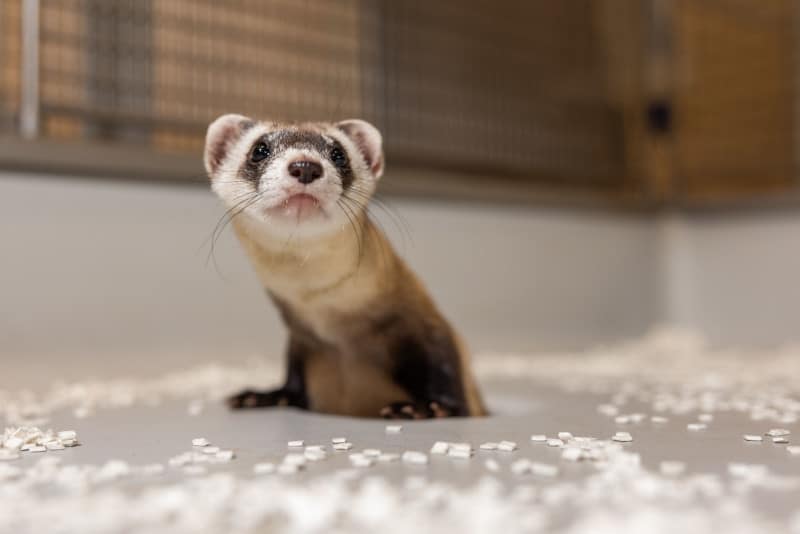One of three black-footed ferret clones that exist in the world has given birth to two healthy kits at the Smithsonian National Zoo and Conservation Biology Institute (NZCBI). This marks the first time a cloned ferret has successfully reproduced, giving further hope for the future of this threatened American species.
Antonia, the new mother ferret, along with her sisters, Elizabeth-Ann and Noreen, was originally cloned from an old tissue sample belonging to a ferret named Willa. A specimen with three times the genetic variations found in black-footed ferrets today, Willa had her DNA collected in 1988 and preserved at the San Diego Zoo’s Frozen Zoo. Researchers hoped that Elizabeth-Ann, the first clone, would be able to reproduce, and thereby begin to put an ease on the species. Sadly, her underdeveloped reproductive system made it impossible to have kits of her own. It was then Antonia who got to become the first cloned black-footed ferret to reproduce, giving birth to three kits, two of which survived—a male and a female.
The implications for this triumphant birth go beyond the two new kits—a result of Antonia’s successful mating with a male ferret named Urchin. Today, all existing black-footed ferrets (Mustela nigripes) descend from the last seven wild ferrets known, which makes them prone to diseases, such as sylvatic plague and the canine distemper virus.
Willa died before having kits of her own. However, the fact that Antonia, who carries her DNA, has reproduced, means that her genes will be added to a very limited pool. “So by doing this, we’ve actually added an eight founder,” Tina Jackson, black-footed ferret recovery coordinator for the U.S. Fish and Wildlife Service, told the Colorado Sun. “And in some ways that may not sound like a lot, but in this genetic world, that is huge.”
For now, Antonia and her kits will remain at the NZCBI, which oversees a breeding program that introduces 150 and 220 ferrets to carefully studied environments every year, with the goal of fostering bigger, healthier populations.
“The successful breeding and subsequent birth of Antonia’s kits marks a major milestone in endangered species conservation,” says Paul Marinari, senior curator at the NZCBI. “The many partners in the Black-footed Ferret Recovery Program continue their innovative and inspirational efforts to save this species and be a model for other conservation programs across the globe.”
Antonia, a cloned black-footed ferret, has given birth to two healthy kits, marking the first time a cloned ferret has successfully reproduced.

Photo: Smithsonian’s National Zoo and Conservation Biology Institute via FWS (Public domain)
Source: Advancements for Black-footed Ferret Conservation Continue with New Offspring from Cloned Ferret
Related Articles:
Stunning Underwater Portraits of Rare and Endangered Marine Life in the Azores
Colorful Stamp Designs Celebrate the Beauty of Endangered Species
Endangered Yellow-Eyed Penguin Is Crowned New Zealand’s Bird of the Year

